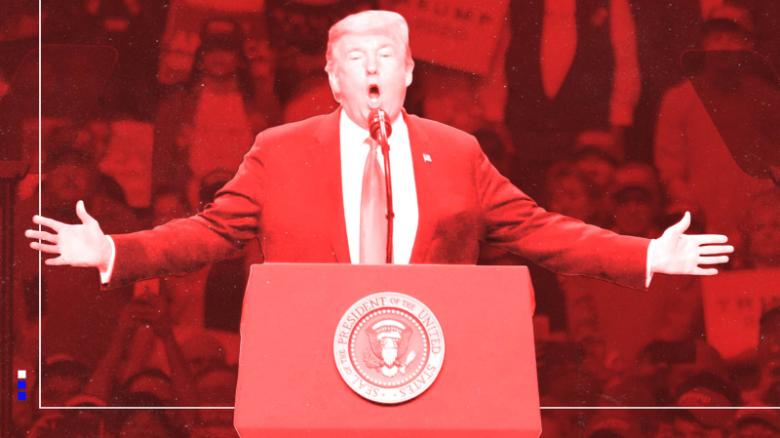(CNN)If President Donald Trump loses in 2020, it will be at the hands of women.
While the chance of a woman winning the Democratic presidential nomination for 2020 aren't too high at this very moment, female voters seem keen on kicking Trump to the curb.
An examination of recent CNN polls reveal that we could be looking at a record gender gap in the 2020 presidential election. For simplicity's sake, I'm comparing Former Vice President Joe Biden (the leader in the Democratic primary polls) to Trump. In general election matchups against all the leading Democratic candidates, a greater than 25-point gender gap existed.
Biden has held a 60% to 36% lead over Trump among women in an average of our last two (October and December) CNN/SSRS polls. The same polling put Trump up 52% to 42% among men voters. When you combine Biden's 24-point lead among women and Trump's 10 point lead among men, this makes for a 34-point gender gap.
Gender gaps have been getting larger in recent years. From 1952 to about 1980, there really wasn't a gender gap in presidential elections. So this isn't just about Trump.
Still, this 34-point gender gap would be a significant increase from what we saw in 2016. In that election, the gender gap was 25 points. This, itself, was a record gender gap for any presidential election dating back to 1952. In fact, no presidential election had previously featured a gender gap of even greater than 20 points.
The gender gap becoming larger would fit with what we've seen in the Trump era. There was a larger gender gap in the 2018 House midterm election (23 points) than in any previous midterm.
But what's causing an escalation in the gender gap from even 2016 and 2018? It's women turning even more against Trump than they were previously.
Back in 2016, women voted for Clinton by 14 points. Therefore, the Democratic margin among women has grown 10 points from 14 points to 24 points in recent polling. You'd have to go all the way back to the blowout election of 1964 to find an election in which women voted Democratic by a larger margin.
Interestingly, the Republican margin among men is basically unchanged from 11 points in 2016 to 10 points in CNN's most recent polling.
When you dig into the crosstabs further, you see a lot of familiar stories. On a somewhat small sample size, nonwhite women are supporting Biden by an overwhelming 59-point margin. White women with a college degree back him by a 28-point margin. Neither of these indicate any real movement to the Democrats compared to the 2016 Pew Research Center's validated voter study.
One group that does seem to have shifted, at least in our polling, is white women without a college degree. In our last two polls, Trump has only led among them by an average of 4 points over Biden. In 2016, he won them by 23 points. That's a shift of 19 points.
Meanwhile, white men without a college degree continue to overwhelmingly back Trump. He beat Clinton by 50 points among them and is up 43 points over Biden in the average of our last two polls among them. (In our last poll, Trump's margin was 47 points.)
Put this together, the gender gap among whites without a college degree is up from 27 points to 39 points now.
I should say that polling has tended to underestimate Trump's appeal to white voters without a college degree. But even if the levels of support are underestimated, the chance of a very wide gender gap among whites without a college degree seems high.
This could be a big story in the Midwest battleground states. White women without a college degree make up closer to 30% of voters in the Midwest states decided by 8 points or less in 2016 (i.e. the battleground states). They're closer to 20% of voters in non-battleground states nationwide.
One of those battleground states is Wisconsin. It's the state that put Trump over the 270 electoral vote threshold in 2016. It's a state where Biden has led Trump by 2 points in an average of live interview polls taken since October.
Biden's advantage in the most recent Marquette University Law School poll is driven by women. He's up by 17 points among women, while trailing by 15 points among men. That 32-point gender gap looks a lot like what we're seeing in the national polls.
If Trump is going to win in 2020, he'll need to either shrink his deficit among women or expand it among men. Knowing Trump loves a base first strategy, it wouldn't be surprising if he chooses the latter and the gender gap ends up even larger than being polled right now.


















